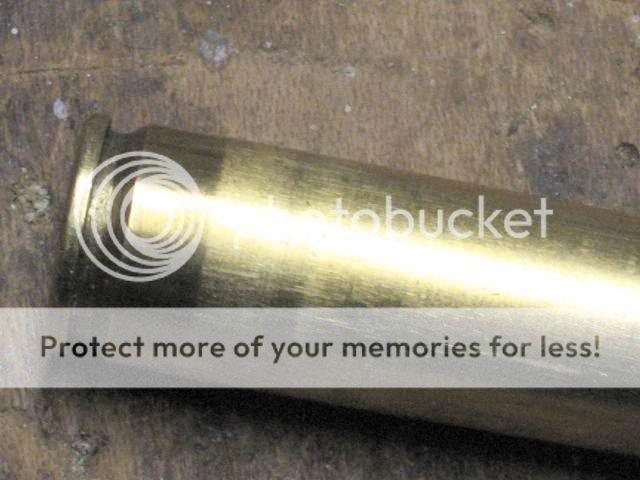SakoShooterSD
Member
- Joined
- May 15, 2011
- Messages
- 17
I would love to get some feedback on whether or not I am running into a safety issue (for the gun or the shooter) when I observe a black residue (burnt powder?) on the neck and shoulder of my 7mm Rem Mag cases upon extraction. (pictures attached).
I noticed this on some rounds fired Friday at the range with the latest loads I've been developing with my Dad. I fired 6 rounds total on Friday.
Some show little or no residue. Some show significant residue, down to just above the base of the shoulder.
After the first two shots, the group turned out nice and tight: 0.35" for four shots, at 100yds. So I think the accuracy is good enough for hunting.
But, is this residue on the shoulder a problem that I need to worry about?
Is it dangerous?
(Will it lead to damage to the gun or shooter?)
These latest loads were done with the following recipe:
Nosler brass, full-length resized in RCBS dies. (This was the third or fourth firing.)
68.9 gr of Retumbo powder.
150 gr Barnes TTSX bullet.
CCI 250 LRM primers.
COAL 3.290".
The first rounds fired did not have any mark, but I think that was because there was some leftover lube in the chamber from the previous gun cleaning. This may have either provided prophylactic protection, or may have changed the pressure in the chamber, and the reaction of the brass. I'm not sure, but I do know the cases had lube on them after extraction. (Yes, I should have run a dry patch through the gun before firing. Next time I will.)
Any input would be welcome.
Thanks.
I noticed this on some rounds fired Friday at the range with the latest loads I've been developing with my Dad. I fired 6 rounds total on Friday.
Some show little or no residue. Some show significant residue, down to just above the base of the shoulder.
After the first two shots, the group turned out nice and tight: 0.35" for four shots, at 100yds. So I think the accuracy is good enough for hunting.
But, is this residue on the shoulder a problem that I need to worry about?
Is it dangerous?
(Will it lead to damage to the gun or shooter?)
These latest loads were done with the following recipe:
Nosler brass, full-length resized in RCBS dies. (This was the third or fourth firing.)
68.9 gr of Retumbo powder.
150 gr Barnes TTSX bullet.
CCI 250 LRM primers.
COAL 3.290".
The first rounds fired did not have any mark, but I think that was because there was some leftover lube in the chamber from the previous gun cleaning. This may have either provided prophylactic protection, or may have changed the pressure in the chamber, and the reaction of the brass. I'm not sure, but I do know the cases had lube on them after extraction. (Yes, I should have run a dry patch through the gun before firing. Next time I will.)
Any input would be welcome.
Thanks.



